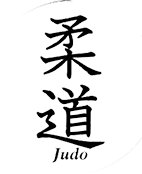Purpose
Kata (form) is a prearranged set of techniques to teach, learn and practice the techniques and principles of Judo and to blend/harmonize (ri ai) them by practicing.
Koshi waza (Hip Techniques/Hip Throws) have as a principle to use your hip as a fulcrum to execute a throw. Close hip to hip contact (the hip of Tori very close below the Center of Mass of Uke), that your hip as a fulcrum can work most efficiently and not much lifting is involved. It's more like tilting/tipping.
The mechanics of Hip throws are different because of the axis, Uke is thrown:
A) Rotating Uke
- a) around your hip
- b) over your hip
B) Wheeling Uke over your hip
C) Loading Uke on your hip
D) Shifting Uke on your hip
This Kata can be taught starting with green belt. I tried to use common throws - as far as possible - in Competition Judo for demonstrating the principles and mechanics of Koshi waza also to close the gap between Kata and Shiai. Students should have a benefit practicing Kata both in understanding the principles and mechanics of Judo and success in contest.
Techniques
First Set (right handed)
Rotating Uke around your Hip
Uki Goshi
https://www.youtube.com/watch?v=SNTuDRgoOtg
Rotating Uke over your Hip
O goshi
https://www.youtube.com/watch?v=PFbILGwd5L4&feature=youtu.be
Wheeling Uke over your Hip
Sode tsurikomi goshi hidari
https://www.youtube.com/watch?v=zy198dSDRC8
Shifting Uke on your Hip
Utsuri goshi
https://www.youtube.com/watch?v=EBTuQZmaaOc
Second Set (left handed)
Rotating Uke around your Hip
Harai Goshi
https://www.youtube.com/watch?v=SQ7jLH5fSfY
Rotating Uke over your hip
Tsuri goshi
https://www.youtube.com/watch?v=2meKovMhZb8
(Koshi Uchi mata)
https://www.youtube.com/watch?v=1mKgUP2XbYo
Wheeling Uke over your Hip
Koshi guruma
https://www.youtube.com/watch?v=pJsQrgMhgk4
Loading Uke on your Hip
Ushiro goshi
https://www.youtube.com/watch?v=b_2mR7mGG10
If you like to, you can also use Koshi Uchi mata as a throw to rotate Uke over the hip of Tori and replace Tsuri goshi.
You can also change right to left handed in set one and left to right handed in set two.
Kata (form) is a prearranged set of techniques to teach, learn and practice the techniques and principles of Judo and to blend/harmonize (ri ai) them by practicing.
Koshi waza (Hip Techniques/Hip Throws) have as a principle to use your hip as a fulcrum to execute a throw. Close hip to hip contact (the hip of Tori very close below the Center of Mass of Uke), that your hip as a fulcrum can work most efficiently and not much lifting is involved. It's more like tilting/tipping.
The mechanics of Hip throws are different because of the axis, Uke is thrown:
A) Rotating Uke
- a) around your hip
- b) over your hip
B) Wheeling Uke over your hip
C) Loading Uke on your hip
D) Shifting Uke on your hip
This Kata can be taught starting with green belt. I tried to use common throws - as far as possible - in Competition Judo for demonstrating the principles and mechanics of Koshi waza also to close the gap between Kata and Shiai. Students should have a benefit practicing Kata both in understanding the principles and mechanics of Judo and success in contest.
Techniques
First Set (right handed)
Rotating Uke around your Hip
Uki Goshi
https://www.youtube.com/watch?v=SNTuDRgoOtg
Rotating Uke over your Hip
O goshi
https://www.youtube.com/watch?v=PFbILGwd5L4&feature=youtu.be
Wheeling Uke over your Hip
Sode tsurikomi goshi hidari
https://www.youtube.com/watch?v=zy198dSDRC8
Shifting Uke on your Hip
Utsuri goshi
https://www.youtube.com/watch?v=EBTuQZmaaOc
Second Set (left handed)
Rotating Uke around your Hip
Harai Goshi
https://www.youtube.com/watch?v=SQ7jLH5fSfY
Rotating Uke over your hip
Tsuri goshi
https://www.youtube.com/watch?v=2meKovMhZb8
(Koshi Uchi mata)
https://www.youtube.com/watch?v=1mKgUP2XbYo
Wheeling Uke over your Hip
Koshi guruma
https://www.youtube.com/watch?v=pJsQrgMhgk4
Loading Uke on your Hip
Ushiro goshi
https://www.youtube.com/watch?v=b_2mR7mGG10
If you like to, you can also use Koshi Uchi mata as a throw to rotate Uke over the hip of Tori and replace Tsuri goshi.
You can also change right to left handed in set one and left to right handed in set two.



